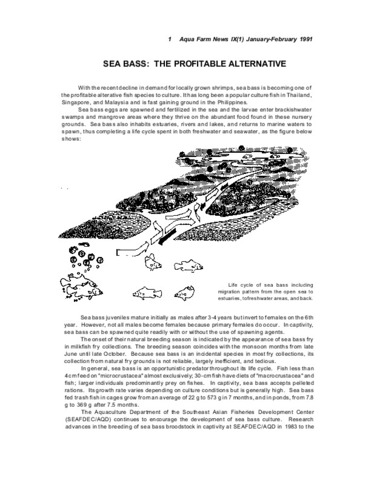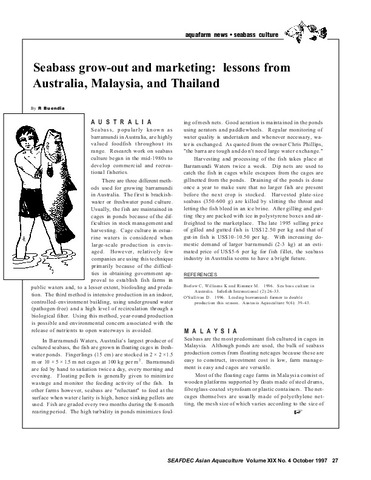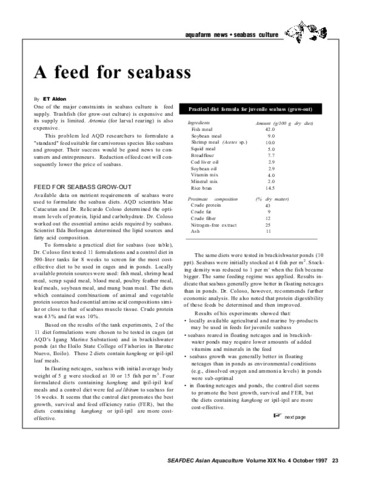Development of an ovarian biopsy technique in the sea bass, Lates calcarifer (Bloch).
- Global styles
- MLA
- Vancouver
- Elsevier - Harvard
- APA
- Help

View/
Date
1989Author
Page views
2,193ASFA keyword
AGROVOC keyword
Taxonomic term
Metadata
Show full item record
Share
Abstract
A convenient and rapid biopsy method for taking ovarian samples from mature sea bass (Lates calcarifer Bloch) is described. Intra-ovarian oocytes siphoned with polyethylene tubing from any region of the ovary provide a sample representative of the maturational stage of sea bass. The osmolality of a 5% phosphate buffered formalin solution is similar to that of sea bass plasma. The follicular diameter of cannulated sea bass oocytes can be measured within an hour after fixation in 5% phosphate buffered formalin without significantly deviating from the diameter of fresh oocytes.
Suggested Citation
Garcia, L. M. (1989). Development of an ovarian biopsy technique in the sea bass, Lates calcarifer (Bloch). Aquaculture , 77(1), 97-102. https://doi.org/10.1016/0044-8486(89)90025-2
Type
ArticleISSN
0044-8486Collections
- Journal Articles [1258]
Related items
Showing items related by title, author, creator and subject.
-
Sea bass: The profitable alternative
Southeast Asian Fisheries Development Center, Aquaculture Department (Aquaculture Department, Southeast Asian Fisheries Development Center, 1991) -
Seabass grow-out and marketing: lessons from Australia, Malaysia, and Thailand
Buendia, Romeo (Aquaculture Department, Southeast Asian Fisheries Development Center, 1997) -
A feed for seabass
Aldon, E. T. (Aquaculture Department, Southeast Asian Fisheries Development Center, 1997)One of the major constraints in seabass (Lates calcarifer) culture is feed supply. Details are given of work conducted at AQD regarding the formulation of a 'standard' feed suitable for carnivorous species like the seabass ...






